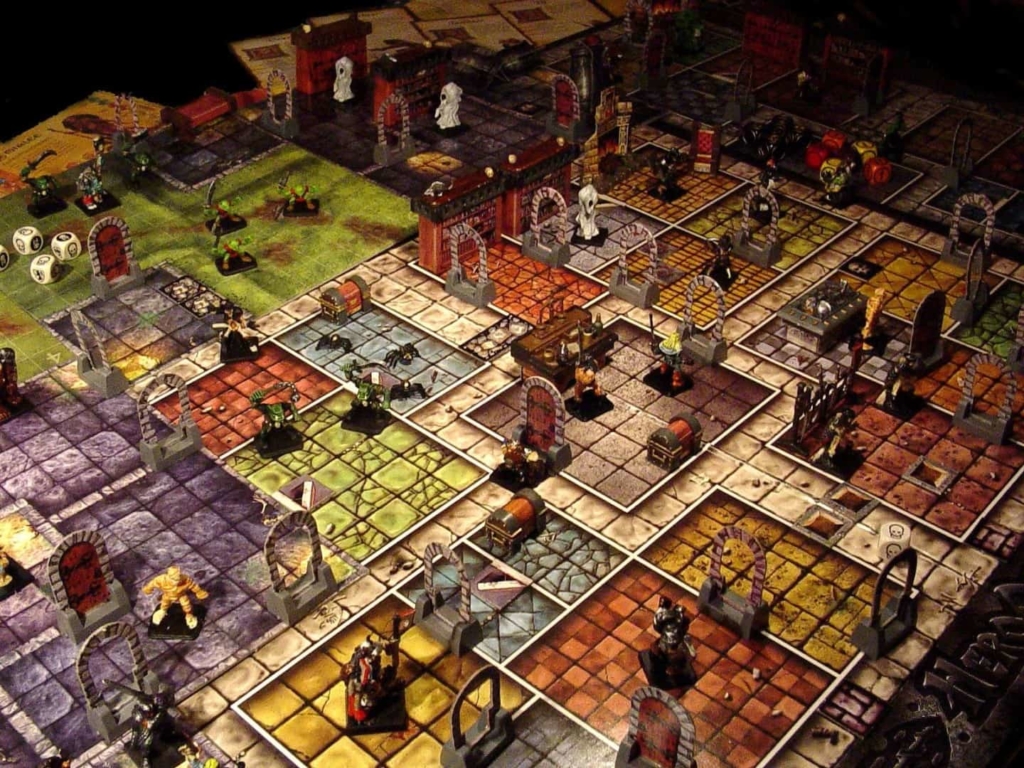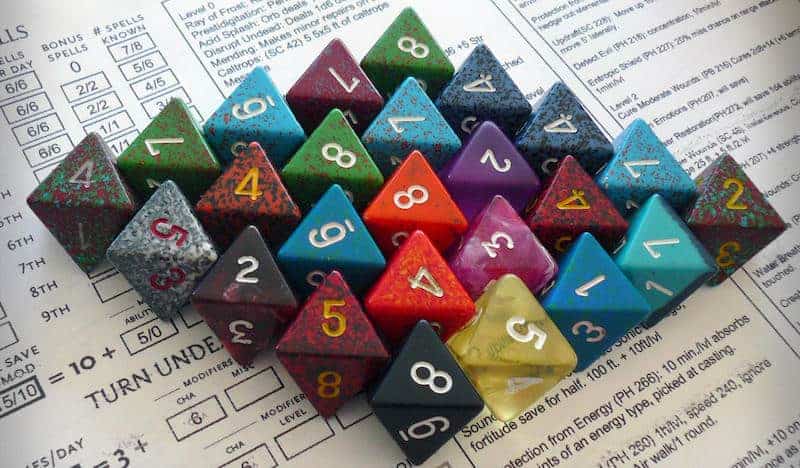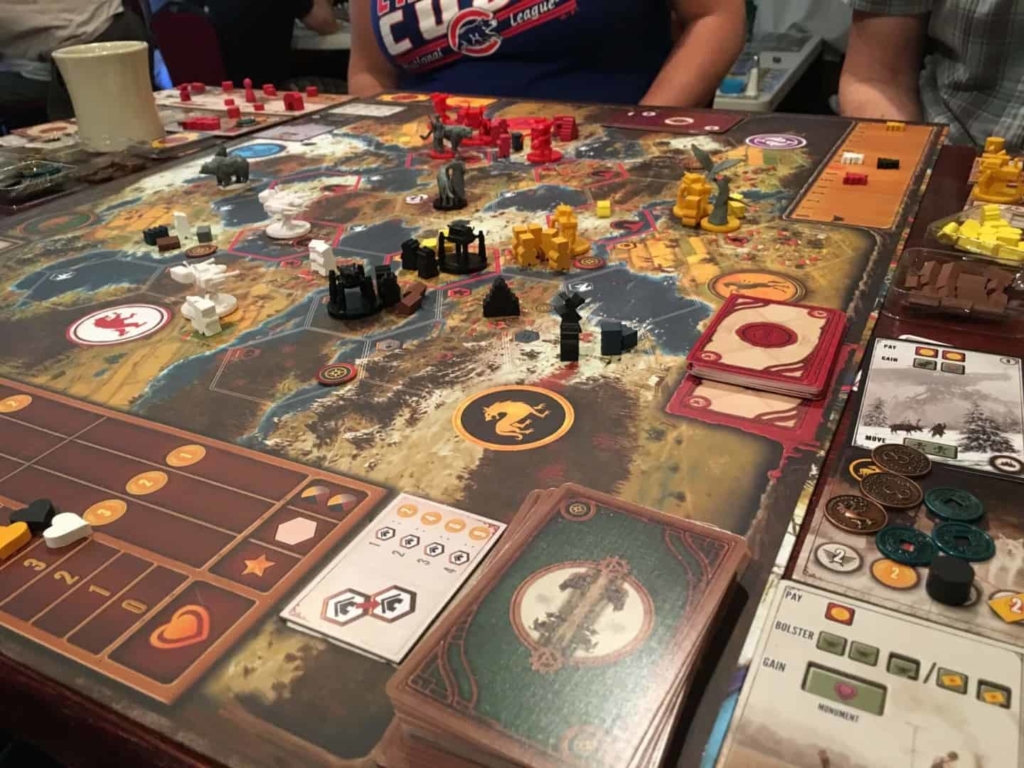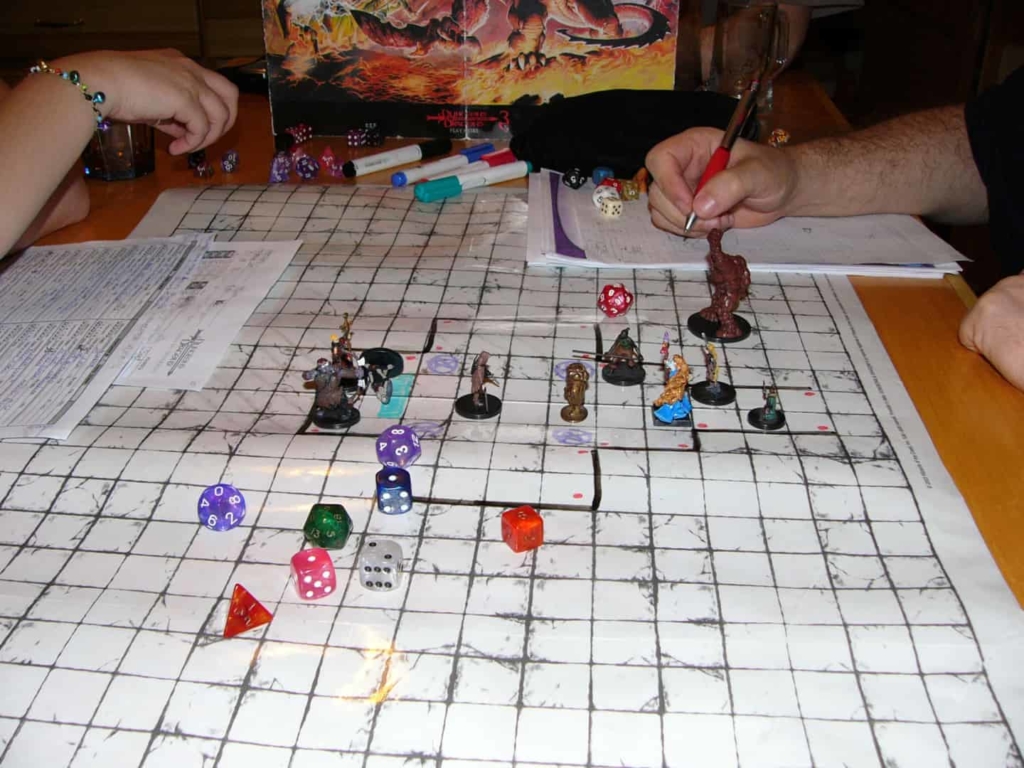The Complete History of Role-Playing Games (RPGs): Part 1 – When Tables Were Top
Ever wondered where the idea of character levels or XP came from? Why fantasy is final? What RPGs looked like before graphics, or what the first massively multiplayer games were like to play?
Here at Ultimate Gaming Paradise, I will be looking into those questions and many more in this eighteen-part series delving into the history of role-playing games, moving through the years from the very early days, to some of the top adventures available today. But first, we must start at the beginning…
Episode One: When Tables Were Top
To start with the very origins of RPGs you need to strap into your time machine – we’re going back quite a while. Back to the early 1970s.
Fifty years ago, there was no such thing as a ‘role-playing game’. It was a term that would draw blank stares from everyone, even the most hardened war-gaming enthusiast. Ah, but war games; they were all the rage. They didn’t take on the fantasy aspect we might be aware of now, with things like Warhammer, but were focussed on re-enacting real battles or new scenarios based on those real-world historical events. Wargaming involved rules, and little figures for soldiers and tanks, and a lot of paperwork. It was an engrossing hobby for those who enjoyed such things, but for those on the outside, it was pretty impenetrable.
And it was all about numbers. Platoons here, squadrons there, fleets out at sea. Tactics, but no personality.
In the midst of all this, one man stood up and asked what it might be like to look at this from the perspective of a single soldier. What would a game look like where, instead of moving entire armies around, it was all about one hero’s actions? How would that play?
From that germ of an idea came Dungeons and Dragons, the granddaddy of role playing games.
Warriors and Wizards
In 1974, E. Gary Gygax invented Dungeons and Dragons (D&D). It was a concept that revolutionised hobby gaming during the 1970s and 80s, providing players with a completely new perspective. No longer were games based around disconnected generals, moving units on a battlefield, but instead, it was a lot more personal. You played a single character, part of an elite team of friends, on an exciting quest.

It was gaming crossed with story telling; combat stats and dice-based mechanics combined with the thrill of a good narrative.
A perfect combination.
Explaining Dungeons & Dragons to someone who has never played has always been a hard sell. “Well,” you say, “it’s like you sit around with five or so of your friends, and each of you has your character description written on a piece of paper, and one person is the Dungeon Master.”
“Uhuh,” comes the response.
“Well, yeah, so, well, the Dungeon Master makes up the story and sort of tells you where you are and what you can see, and you and the others tell them what it is you want to do.”
“Uhuh?” Now with a little more confusion.
“So, for example, the Dungeon Master would say ‘You are in an inn, it’s night, and the fire is lit. Standing by the fire is a tall man with a black cloak and a staff. It’s a busy night, and there’re people sitting eating and drinking at all the tables.” And then you might say “I go up to the man and say ‘hello’.”
“And that’s it?”
“Well, then we’d talk, you know, the Dungeon Master would play the part of the cloaked man, and I’d play the part of me.”
“You?”
“Not me me, my character me. I’m Dirk Haggard, Paladin of Light.”
“Right. So Dirk and this stranger would chat?”
“Yeah.”
“And that’s fun?”
“Yeah.”
And then you smile – because it is fun. It’s really, really fun. It’s the kind of fun that you can’t really explain to someone; it’s that has-to-be-experienced sort of fun. Let’s take a look at why.
Developing a character
The core strength of D&D, and the role-playing games that came after it, is in the idea of personal connection. This isn’t a game that you put down at the end of the session and forget about, and this is something that sits with you. Each time you come back to it, you spend more time with your character (and those of your friends), improving them, building on their strengths, ironing out their weaknesses, and enjoying their story. When they get upset, you get upset, and when they laugh, it’s you laughing.
It’s this aspect of the game which gives it the ‘RP’ in its title. Role-playing. You take on the role of the character and with it, their dreams and ambitions. You are invested.
At some point in your Dungeons & Dragons career, you will have a beloved character die, and it’ll hit you hard. Months, maybe years, of regular gaming and development and then you look down at that sheet of paper that represents them, and you’ll be silent. Grieving.
“No! Isn’t there something we can do?” you ask, looking at the Dungeon Master with watery eyes.
And they shrug. It’s not for them to fix your plight. You turn to the others, surely one of them has something.
“Bring me back! Resurrect me!”
But it can’t be done, or maybe it can. Who knows what skills and abilities your party have gained? It’s all part of the fun.
Of course, having one character die opens the door for a new one. You were a wizard, and now you can be a warrior, a thief, a bard, or a priest. You were shy and retiring, but now you can be bolshy and rude. You were humane and caring, and now you can be selfish. It’s role-playing – it’s not you. Have fun being someone else.
Playing the game
Putting the strong draw of character to one side, there’s another great aspect to table top role playing games like D&D: the mechanics of the game.
Gather up your dice, from normal six-sided cubes through to the blessed icosahedron – the D20. Roll them to determine how successful your magic is, or how much damage you do to the goblin with your longsword, roll one to see if you jump the chasm or fall to the rocks below. Can you swim? Sure. Can you swim in these rapids while in armour? Roll a dice.

The mechanics are there in the background, making the story exciting. No one knows if you are going to survive the next encounter with the bandits – not you, and not the Dungeon Master. You might try to talk your way out of it, but what if they don’t like your accent, or simply want your boots? Draw your sword, roll for initiative…
It’s excitement. Minutes turn to hours as you and your friends clatter plastic polyhedrons onto the table, hoping for those great high rolls and praying for no poor failures. Damage is done, health is checked, and sometimes, there’s a tragedy. But with skill and the right decisions, more often than not, your party of friends will be victorious. Gather up some treasure, loot the bodies, and travel on your way. There’s no time to be lost in your quest.
Tables and technology
Remember when we are? It’s the late 70s, maybe early 80s. Computers aren’t a constant in people’s lives yet. Sure, you might have heard of one, maybe there’s a couple at your school or college. But the idea of using one to game with? It’s science fiction.
“Wouldn’t it be cool if there was some sort of technology that could just show us the fights? So, instead of using this figure to represent me on the battlefield, there was a real wizard standing there on the table!”
“Yeah – and we wouldn’t have to roll the dice. Just press a button and he’d cast a spell.”
“Imagine a fireball! Holographic flames cutting across the table.”
“Or if you changed into a dragon!”
“Oh God, imagine a holo-dragon! It’d be as big as the chair, or bigger.”
“Awesome!”
Fantasising about a computerised Dungeon Master’s assistants wasn’t hard, or that unusual. Far outside of the ability of the day’s technology, for sure, but within the realms of imagination. Something that made the mechanics automatic, and could show those incredible battles on the table.
Even something that stored the stories and the maps, something that could speak, even, playing the part of those non-player characters.
It would be incredible.
The legacy of the early days
So much of standard RPG terminology comes from those early days of Dungeons and Dragons, and the similar games it spawned. Ever wondered about the origins of those terms? Look no further.

Experience points (XP or EXP)
Needing a way to track progress in the game, D&D introduced us all to the idea of experience points. At the end of each encounter, some of these points would be awarded to show the characters’ growth and development through their adventure. Kill a few goblins, have a few XP, but when you have taken out a mighty Red Dragon and looted its lair? Expect to be earning thousands. It was a brilliant system, able to scale as needed – an intangible reward for a strange, intangible, game.
Character levels
Simplifying the growth of characters was important. D&D set thresholds where enough XP meant you learned new skills. All characters started fairly inept at level one, but earn enough experience, and you progressed to level two, gained a few new skills and improved in combat. Level three brought new abilities and level four beyond that.
It’s a system that, though tweaked a million times in fifty years, is still essentially the same for so many RPGs today.
Dungeons
It was simple really – if you were inside some sort of maze, it was a dungeon, and if you were outside, it was ‘the wilderness’. Making a snappy title for the game, dungeons became more of a draw than wilderness scenarios. It also allowed for some tight (if illogical) early adventure creation that even the most inexperienced Dungeon Master could play out.
Wolves and Wilderness just never had quite the same ring to it.
Actual dungeons – that is to say, jail cells underneath a castle – featured surprisingly little in most adventures, despite donating their name to the cause.
The party structure
Want to know why there’s always a warrior, a wizard, a healer type, and some thiefy ‘rogue’ character to pick from? Thank D&D again. It made for a balanced party back then, and it sort of still does now. Wizards have high intelligence and low strength, warriors flip that over, healers are always wise (and often religious), and thieves prize their dexterity.
And so it shall always be!

NPCs
It stands for ‘non-player character’. That is to say, the many people in the world that were represented by the Dungeon Master, and not one of the players. Bella the Barmaid, Angrath the King, Silas the Wily Jester? All NPCs.
A good Dungeon Master drew on all their acting prowess to portray this huge cast of characters, and so what if High Lord Fizel sounded a little bit like the baker from the previous village?
Inventories, encumbrance, gold pieces, and more, and more…
All of this stuff started here. How many people actually use the word ‘inventory’ in real life? But ask a role-playing gamer, and they’ll know exactly what you mean.
All those monsters
Dungeons and Dragons (and not JK Rowling) brought griffins, drakes, ghouls, beholders, bugbears, wraiths, and many more to the masses. In fact, I have a strong belief that Ms Rowling had more than a passing knowledge of the Monster Manual when she wrote Harry Potter.
Dungeons and Dragons in 2020
Of course, a groundbreaking game this successful wasn’t simply supplanted by the swell of games that came in its wake. D&D is still alive and well in 2020, now in its 5th Edition. Why not step away from the screen for an afternoon and take a look? Trust me; you’ll have fun.
Coming next…
Join me next month, when I take a look at some very early computer adventure games, and see what else was going on at the birth of the genre.

